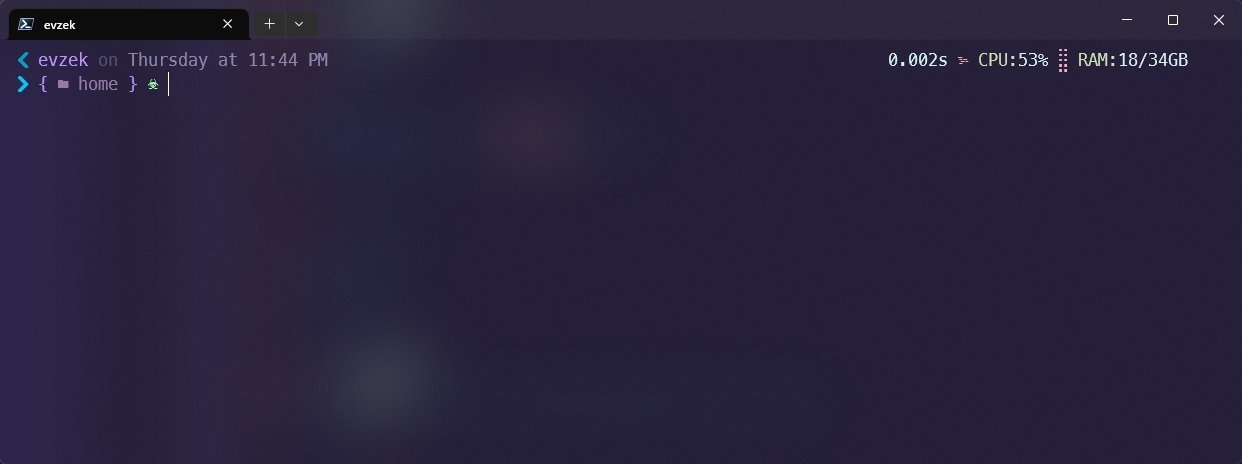
Mejorar la apariencia de tu terminal de Power Shell utilizando Oh My Posh y fuentes de Nerd Fonts no solo la hace lucir más atractiva, sino que también puede mejorar tu experiencia en la terminal.
Al personalizar tu prompt con información relevante para ti, como la hora, la ruta de tu directorio actual, ms, el estado de tus repositorios de Git, etc. Puedes ahorrar tiempo y aumentar tu productividad en la terminal. Además, tener una terminal personalizada te permite trabajar con mayor comodidad y estilo.
Descarga tu fuente de Nerd Fonts
Ve a nerdfonts.com y descarga las fuentes que más te gusten. Asegúrate de instalar las que dicen “Complete Windows Compatible”.
NOTA: Recomiendo solo instalar las regulares ej. “Complete Windows Compatible Regular”.
- Caskaydia Cove es la recomendada por Windows Terminal.
- Meslo es la recomendada por Ho My Posh.
Actualizar Power Shell
Desde el sitio oficial de Microsoft Power Shell nos dicen como hacerlo.
Ejecutamos terminal como administrador y buscamos actualizaciones de Power Shell
# Buscar actualizaciones PowerShell
winget search Microsoft.PowerShell
# Comando para actualizar Power Shell
winget install –id Microsoft.Powershell –source winget¿Cómo instalar Ho My Posh?
Desde la tienda de Microsoft.
Con winget:
winget install JanDeDobbeleer.OhMyPosh -s wingetscoop install https://github.com/JanDeDobbeleer/oh-my-posh/releases/latest/download/oh-my-posh.jsonSet-ExecutionPolicy Bypass -Scope Process -Force; Invoke-Expression ((New-Object System.Net.WebClient).DownloadString(‘https://ohmyposh.dev/install.ps1’))Te recomiendo usar Chocolatey que es un gesto de paquetes.
# Instalar con Choco
choco install oh-my-posh -y
# Actualizar
choco upgrade oh-my-posh
# Desinstalar
choco uninstall oh-my-posh -yCambiemos la fuente de la terminal
- Clic derecho en la barra superior y “Configuración” o desplegamos el menú de la fecha hacia abajo y clic en “Configuración”.
- Selecciona “PowerShell” y dirígete a configuración adicional.
- Haz clic en “Apariencia” del lado derecho hasta abajo.
- En la sección “Tipo de Fuente”, selecciona la fuente que deseas utilizar.
- Si la fuente que deseas utilizar no se encuentra en la lista, haz clic en “Mostrar todas las fuentes” para ver una lista completa de fuentes disponibles en tu sistema.
- Una vez que hayas seleccionado la fuente deseada, clic en guardar.
Archivo de perfil de PowerShell
echo $PROFILENew-Item -Force C:UsersevzekOneDriveDocumentosPowerShellMicrosoft.PowerShell_profile.ps1Abrimos nuestro archivo con cualquier editor, para poder agregar el comando de inicio de Ho My Posh:
oh-my-posh init pwsh | Invoke-Expression¿Cómo cambiar de tema en Ho My Posh?
Get-PoshThemesModificar Profile para seleccionar el tema.
oh-my-posh init pwsh –config “$env:POSH_THEMES_PATH/NOMBREDELTEMA.omp.json” | Invoke-ExpressionModificar Profile para seleccionar el tema localmente.
oh-my-posh init pwsh –config ‘C:/Users/Posh/NOMBREDELTEMA.omp.json’ | Invoke-ExpressionModificar Profile para seleccionar el tema remotamente.
oh-my-posh init pwsh –config ‘C:/Users/Posh/NOMBREDELTEMA.omp.json’ | Invoke-ExpressionMi terminal PowerShell personalizada
schema.json
“$schema”: “https://raw.githubusercontent.com/JanDeDobbeleer/oh-my-posh/main/themes/schema.json”,
“blocks”: [
{
“alignment”: “left”,
“newline”: true,
“segments”: [
{
“foreground”: “#bc93ff”,
“leading_diamond”: “<#04A0BD> ue200 “,
“properties”: {
“display_host”: true
},
“style”: “diamond”,
“template”: “{{ .UserName }} <#545170>on“,
“type”: “session”
},
{
“foreground”: “#8A86AD”,
“properties”: {
“time_format”: “Monday <#545170>at 3:04 PM”
},
“style”: “diamond”,
“template”: ” {{ .CurrentDate | date .Format }} “,
“type”: “time”
},
{
“foreground”: “#ee79d1”,
“properties”: {
“branch_icon”: “ue725 “,
“fetch_stash_count”: true,
“fetch_status”: true,
“fetch_upstream_icon”: true,
“fetch_worktree_count”: true
},
“style”: “diamond”,
“template”: ” {{ .UpstreamIcon }}{{ .HEAD }}{{if .BranchStatus }} {{ .BranchStatus }}{{ end }}{{ if .Working.Changed }} uf044 {{ .Working.String }}{{ end }}{{ if and (.Working.Changed) (.Staging.Changed) }} |{{ end }}{{ if .Staging.Changed }} uf046 {{ .Staging.String }}{{ end }}{{ if gt .StashCount 0 }} uf692 {{ .StashCount }}{{ end }} “,
“type”: “git”
}
],
“type”: “prompt”
},
{
“alignment”: “right”,
“segments”: [
{
“foreground”: “#a9ffb4”,
“style”: “plain”,
“type”: “text”
},
{
“foreground”: “#D5F1F1”,
“properties”: {
“style”: “dallas”,
“threshold”: 0
},
“style”: “diamond”,
“template”: ” {{ .FormattedMs }}s <#F1B2BE>ue601“,
“type”: “executiontime”
},
{
“properties”: {
“root_icon”: “uf292 ”
},
“style”: “diamond”,
“template”: ” uf0e7 “,
“type”: “root”
},
{
“foreground”: “#D5F1F1”,
“style”: “diamond”,
“template”: ” <#CFE1B8>CPU:{{ round .PhysicalPercentUsed .Precision }}% “,
“type”: “sysinfo”
},
{
“foreground”: “#D5F1F1”,
“style”: “diamond”,
“template”: “<#F1B2BE>uf6dc <#CFE1B8>RAM:{{ (div ((sub .PhysicalTotalMemory .PhysicalFreeMemory)|float64) 1000000000.0) }}/{{ (div .PhysicalTotalMemory 1000000000.0) }}GB “,
“type”: “sysinfo”
}
],
“type”: “prompt”
},
{
“alignment”: “left”,
“newline”: true,
“segments”: [
{
“foreground”: “#9779A8”,
“leading_diamond”: “<#00c7fc> ue285 <#bc93ff>{“,
“properties”: {
“folder_icon”: “uf07b”,
“folder_separator_icon”: “uf9e0”,
“home_icon”: “home”,
“style”: “agnoster_full”
},
“style”: “diamond”,
“template”: ” ue5ff {{ .Path }} “,
“trailing_diamond”: “<#bc93ff>}“,
“type”: “path”
},
{
“foreground”: “#A9FFB4”,
“foreground_templates”: [
“{{ if gt .Code 0 }}#ef5350{{ end }}”
],
“properties”: {
“always_enabled”: true
},
“style”: “plain”,
“template”: ” ue286 “,
“type”: “exit”
}
],
“type”: “prompt”
}
],
“console_title_template”: “{{ .Folder }}”,
“transient_prompt”: {
“background”: “transparent”,
“foreground”: “#FEF5ED”,
“template”: “ue285 ”
},
“version”: 2
}evZek Powershell
{
“name”: “evZek Powershell”,
“background”: “#261D45”,
“black”: “#0C0C0C”,
“blue”: “#57499D”,
“brightBlack”: “#00BABC”,
“brightBlue”: “#3B78FF”,
“brightCyan”: “#42BFB9”,
“brightGreen”: “#05FF8D”,
“brightPurple”: “#B4009E”,
“brightRed”: “#E74856”,
“brightWhite”: “#00E4FF”,
“brightYellow”: “#04FDFF”,
“cursorColor”: “#E4F77E”,
“cyan”: “#3A96DD”,
“foreground”: “#CCCCCC”,
“green”: “#13A10E”,
“purple”: “#881798”,
“red”: “#C50F1F”,
“selectionBackground”: “#FFF159”,
“white”: “#CCCCCC”,
“yellow”: “#C19C00”
}Conclusión:
Si eres un usuario de Windows y utilizas la terminal de Power Shell con regularidad, Nerdfonts y Oh My Posh pueden ayudarte a mejorar significativamente su apariencia y funcionalidad.


0 comentarios